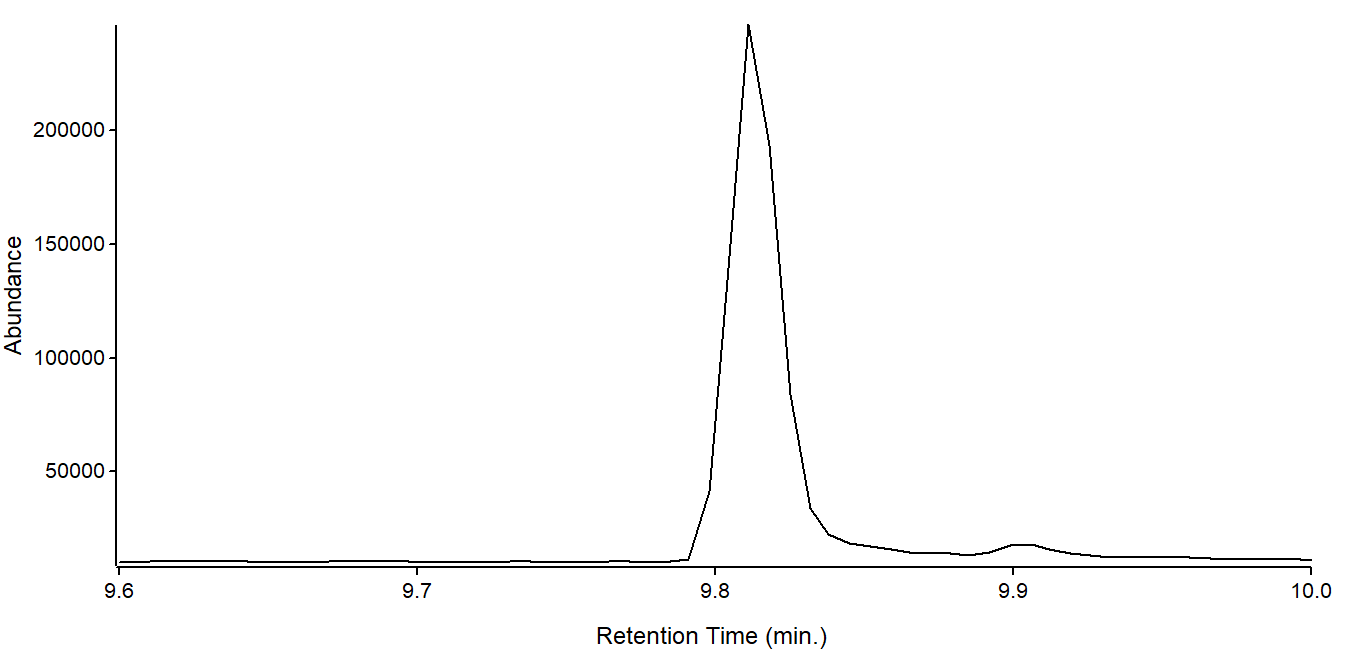
Thyme Hydrosol
Thyme is a dried leaf that comes from the Thymus sp. shrub. It originates from the Greek word “Thymus” and it means to purify. It has many culinary and medicinal properties for many years. Thyme is used as a seasoning in many places. The food industry will often use it to add flavour to fish and meats. We can also find it in condiments, relishes, soups and gravies.
The source of this thyme, which came from Turkey, did not specify the species. Do you recognize the species given the composition? If so please email us!
Thyme is an all natural healer, with its recorded history as a medicinal herb dating back to Pliny The Elder's The Natural History, which suggests many medicinal uses for thyme, such as mixing it with mustard and applying it on the stomach for stomach aches. [i] Scientifically, we have proven that thyme is a good sore throat and cough remedy, it can reduce inflammation and aid in healing and it is an immunity booster. [ii]
[i] Bostock, J. Riley H. T. & Pliny. (1855). The Natural History of Pliny. Taylor and Francis, Red Lion Court, and Fleet Street. https://www.perseus.tufts.edu/hopper/text?doc=Perseus%3Atext%3A1999.02.0137%3Abook%3D21%3Achapter%3D89
[ii]Sharifi-Rad M, Varoni EM, Iriti M, Martorell M, Setzer WN, Del Mar Contreras M, Salehi B, Soltani-Nejad A, Rajabi S, Tajbakhsh M, Sharifi-Rad .(2018).Carvacrol and human health: A comprehensive review . National Library of Medecine –PubChem. https://pubmed.ncbi.nlm.nih.gov/29744941/
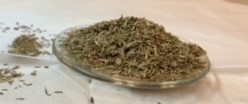
My name is Chloe Lushman and I am a grade 11 student from Happy Valley Goose Bay, Labrador (May 2023). Through the VJKF program, a program to allow Indigenous students to get hands-on research experience in a lab, I was given the wonderful opportunity to work with Sharon Curtis and some grad students in Paul Mayor’s lab at uOttawa. We learned about plant hydrosols. It has been an honour and a thrill to have worked on this project. It has surely been an experience that I will never forget and an incredible achievement to my academics. I am beyond grateful for my week spent in the lab.

Creation of Thyme Hydrosol
About 300g of dry material was soaked overnight with 0.5L of boiling distilled water to prepare the plants for microwave extraction. In the morning, a beaker was placed inside the jar and an ice cone was screwed to the lid of the extraction vessel.The jar was microwaved for 9 minutes, three times, during which all the volatile components will boil, hit the ice cone, and condense back into the beaker. The liquid in the beaker is the hydrosol.
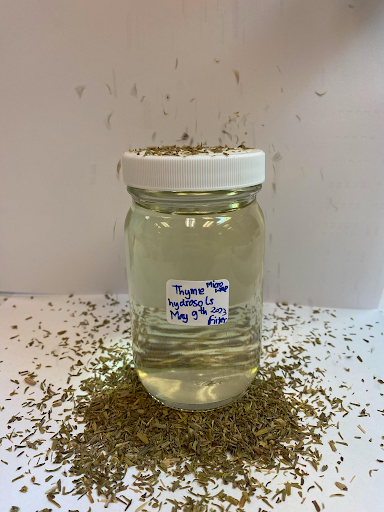
Analysis of Thyme Hydrosol
Once the hydrosol was collected, it was analyzed by GC/MS. To prep the hydrosol for this process, the water had to be removed from the hydrosol along with any larger impurities which may damage the GC. This was done through SPE (solid phase extraction). Once the compounds in our hydrosol were in a non-polar solvent, it was ready for analysis.
The two peaks belonging to the thyme hydrosol on its chromatogram were identified by comparing their mass spectra to a database. The identities of these compounds were further confirmed by calculating their retention index (RI) and comparing it to the RI value established for that compound in the literature. [iii] The major component in the thyme hydrosol is carvacrol, which is a structural isomer of thymol. Carvacrol was present at 93mg/L. The other compound present in the hydrosol was thymoquinone, present at a concentration of 39mg/L. Thymoquinone can be produced from the oxidation of thymol or carvacrol, and was likely produced during the distillation process.
[iii] NIST Office of Data and Informatics. (n.d.). NIST Chemistry Webbook, SRD 69. NIST Chemistry WebBook. https://webbook.nist.gov/chemistry/
Both carvacrol and thymoquinone are bioactive molecules, which have been shown to have antioxidant and antimicrobial properties. Thymoquinone has also demonstrated some properties as an anti-inflammatory. [iv] To take advantage of the possible therapeutic benefits of the hydrosol, a soothing spray for insect bites was made. Other essential oils, such as lavender essential oil, were added to compliment the scent of the thyme hydrosol.
The Soothing Spray Recipe.
100ml of Thyme Hydrosol
4ml Solubiliser (important because oil and water do not mix without this. If a solubiliser is not used there is the potential to spray neat essential oil, which could potentially be harmful, burn, toxic, or just irritating to the skin).
6 drops of lavender and thyme oil (thymus, cp thymol)
2 german chamomile
2 helicrysum
2 myrrh.
Spray on bites. Keep in fridge to preserve and also cold it is very soothing.
Life of unrefridgerated, 2 weeks.
There are no preservatives in this.
[iv] Sharifi-Rad M, Varoni EM, Iriti M, Martorell M, Setzer WN, Del Mar Contreras M, Salehi B, Soltani-Nejad A, Rajabi S, Tajbakhsh M, Sharifi-Rad .(2018).Carvacrol and human health: A comprehensive review . National Library of Medecine –PubChem. https://pubmed.ncbi.nlm.nih.gov/29744941/
National Library of Medicine (n.d) PubChem ,thymoquione https://pubchem.ncbi.nlm.nih.gov/compound/Thymoquinone
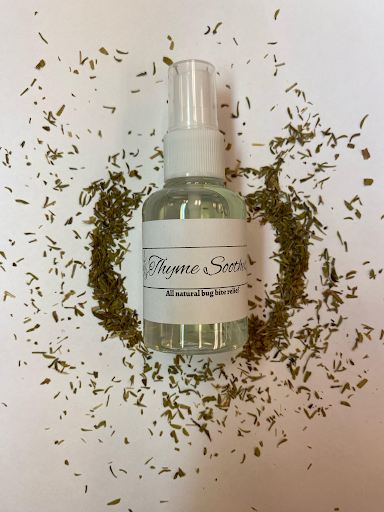
Conclusion
Thyme hydrosol made by microwave extraction has just two components. The major chemical is carvacrol, which is a structural isomer of thymol. Carvacrol is present at a concentration of 93mg/L. The second component is thymoquinone, which is present at 39mg/L. Interestingly, thymol itself is not present in the thyme hydrosol. This is possibly due to the species of thyme used, as the source of thyme used for this extraction did not specify the specific strain. Furthermore, since thymol and isothymol overlap in RI values, it is possible that thymol has been misidentified as carvacrol. Further analysis will be done by comparing the carvacrol in the thyme hydrosol to a thymol standard in order to confirm its identity.
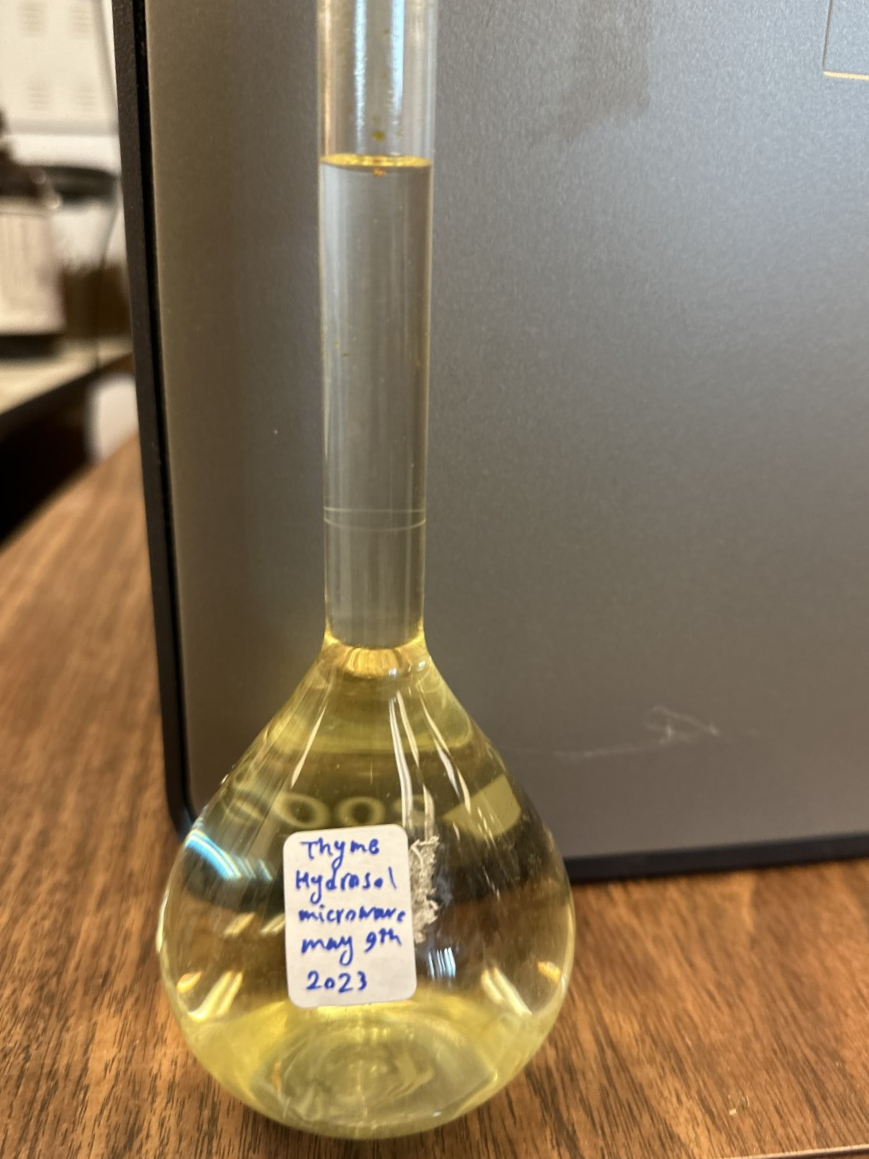
Fresh Thyme Analysis
As well as the dried thyme, an analysis of fresh thyme, Thymus Vulgaris, was done. 173.6g of fresh
thyme was put through the same process as above and was analyzed using the same method.
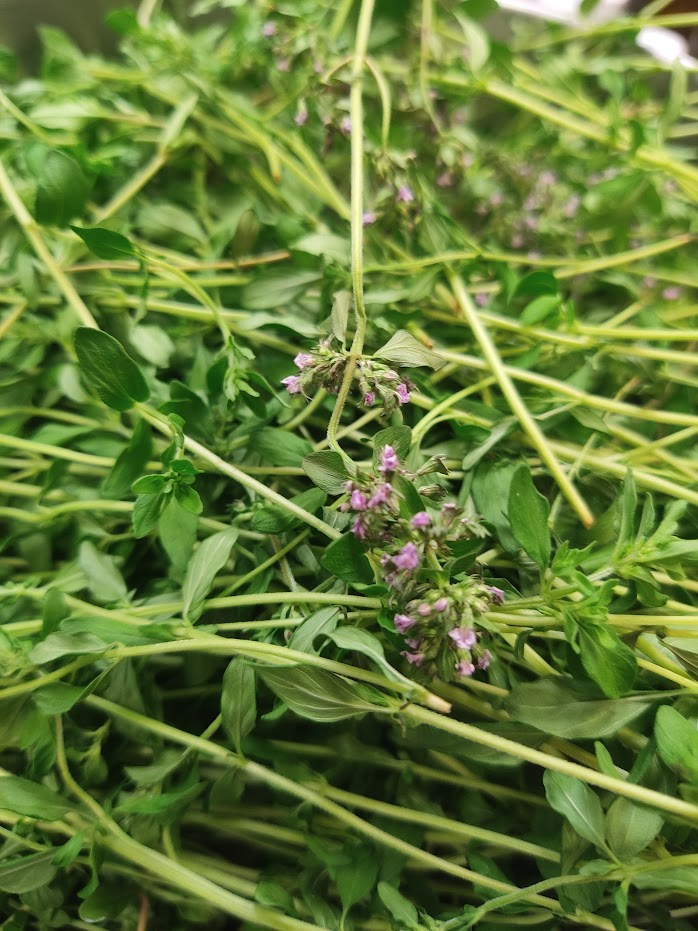
The thyme hydrosol was very simple, containing mostly one compound. Interestingly, the fresh thyme contained mainly thymol at a concentration of 61 mg/L, with a very small amount of carvacrol (5 mg/L).
This is an interesting contrast to the dried, which contained only carvacrol and thymoquinone and no thymol. Additionally, while the dried thyme produced essential oil, the fresh thyme did not.
